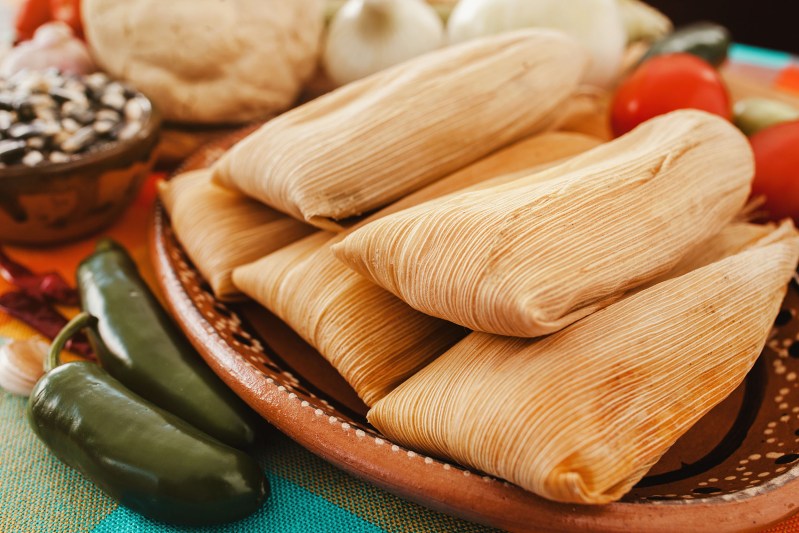
Knowing how to reheat tamales — one of the tastiest and most popular dishes for a night out on the town, complete with a few frosty margaritas — is a must to retain that delicious first-bite flavor.
A traditional Mesoamerican dish, tamales are stuffed with meats or beans and cheese and wrapped in a banana leaf or a corn husk. Steamed and served with pico de gallo and rice, they make for a delightful dish that’s easy to make and packed with flavor and spice.
Tamales are easy to prepare and a great option to make ahead of time and reheat for a quick meal on the go. Whether homemade or store bought, there are a few tips you’ll want to know when reheating them so that you can savor all the goodness these little flavor pouches have to offer. Whether you want to use a steamer, microwave, stove, oven, or air fryer, here are the best ways to make sure you get the perfect hot tamale.
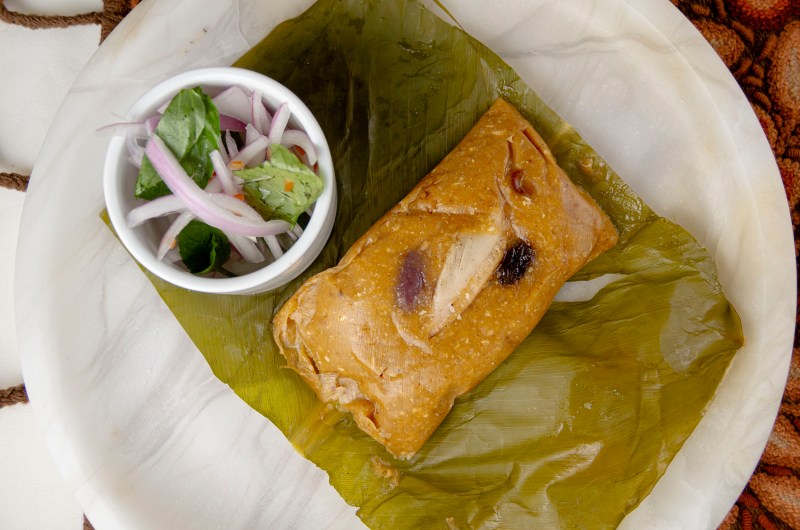
How to reheat tamales in a microwave
Microwaves are the most popular option for heating frozen or cold food. They are simple and easy to use. Here is how you can reheat tamales using a microwave:
- Moisten the husks with cold water or wrap each in a damp paper towel.
- Place them on a microwave-safe plate while leaving space between them.
- Heat them for 1 to 2 minutes to warm them.
However, it’s vital to note that using a microwave is likely to dry your tamales. Steaming makes a better alternative in this case. Also, remember to thaw your frozen tamales in the refrigerator before reheating them in a microwave.
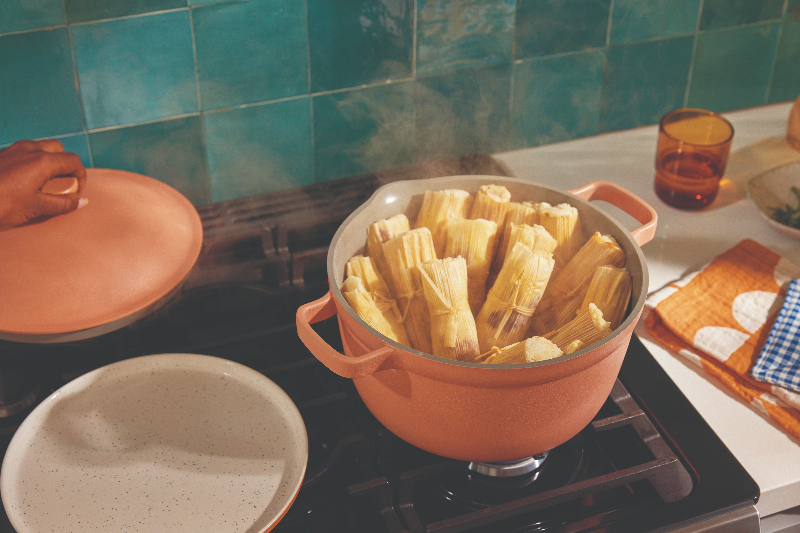
How to steam tamales using a cooking steamer
If you have a steamer, it also makes an excellent option for reheating your tamales. It keeps them from drying out or overcooking. Follow these steps:
- Fill the pot with 2 to 3 inches of water — make sure the water doesn’t touch the bottom of the steaming basket.
- Place the basket into the pot and cover it with a tight-fitting lid. Allow the water to boil.
- Once the water has boiled, use a pair of tongs to place your tamales in the basket.
- Cover the pot and reduce the heat to medium level.
Your tamales should be ready after 30 minutes of steaming. Refrigerated tamales take about 10 minutes less to reheat than frozen tamales.
Can you steam tamales the next day?
With tamales, you can prepare them ahead of time and store them in your refrigerator for up to one week or a couple of months in the freezer. As such, you can steam them the next day and enjoy them while hot. Remember to follow the steps provided above to use a steamer to reheat your tamales.
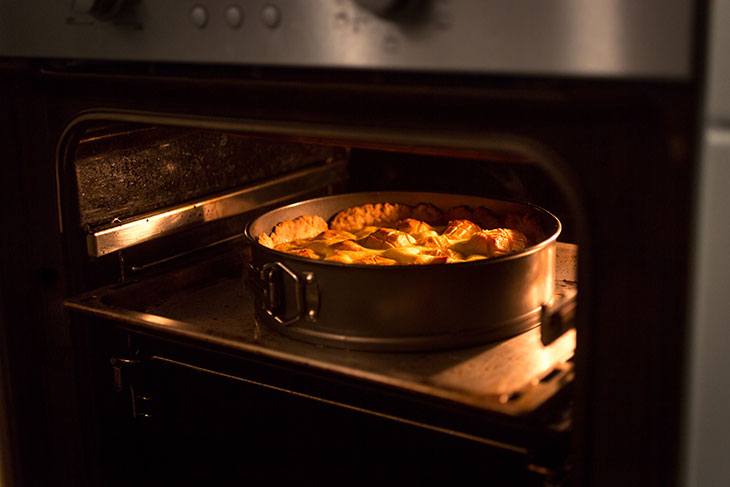
How to reheat tamales in an oven
An oven is also a reliable alternative for reheating your cold tamales. Be sure to follow these simple steps:
- Preheat your oven to 325 degrees Fahrenheit.
- Wrap each tamale about two or three times with aluminum foil.
- Squeeze each tamale to remove trapped air.
- Place the tamales in an oven-safe dish or a sheet pan while leaving space between them.
- Place the dish in the oven and allow the tamales to heat for 20 minutes. If frozen, let them heat for 25 minutes.
Remember to flip your tamales at the 10-minute mark to ensure even heating. Be sure to use a meat thermometer to check your tamales’ temperature. They are ready to serve when at 165 degrees Fahrenheit.
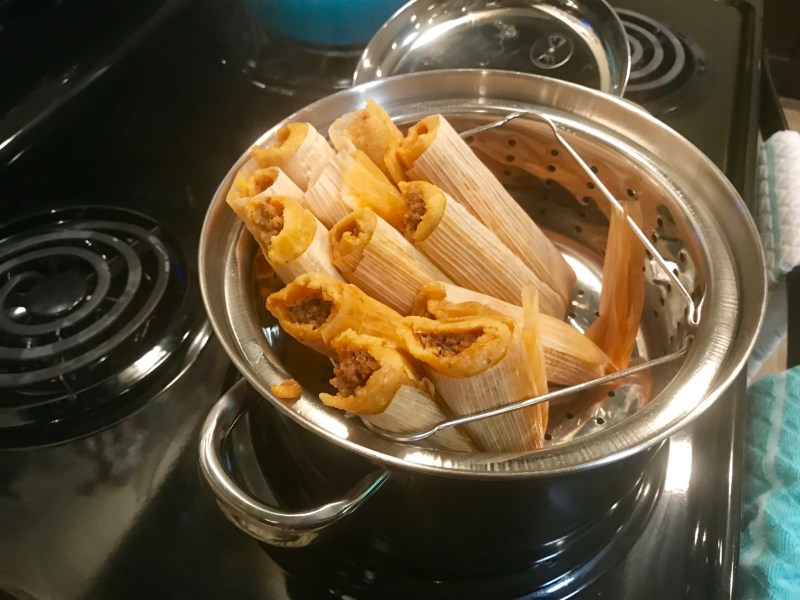
How do you reheat tamales on the stove?
You can also use a stove to reheat your tamales. Some people prefer this option because it brings out the most flavor and makes your tamales crispy. Here are the steps to follow:
- Remove the husks from the tamales and dump them — you can’t have them on while using the stove to reheat your tamales.
- Add a teaspoon of olive oil or your favorite oil to a pan.
- Heat the pan for 2 to 3 minutes on medium heat.
- Place the tamales in the pan and cover it with a lid.
- Flip your tamales every 2 to 3 minutes.
It should take about 10 minutes for your tamales to heat — the exterior should be crispy and brown. This is the most involved option, but it delivers excellent results, letting you enjoy your tamales just the way you like them.
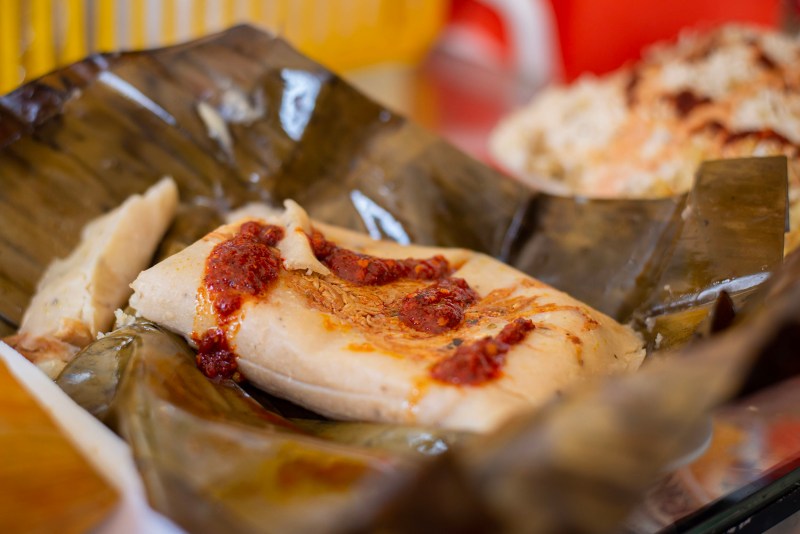
Can you reheat tamales in an air fryer?
Definitely. You can reheat your frozen or cold tamales in an air fryer, and here are the steps to follow:
- Heat the air fryer to a mid-range temperature.
- Moisten the wrappings or husks of your tamales with cold water.
- Place them in the fryer basket without overcrowding them and then heat them for 5 minutes.
Be careful when removing them from the basket as they could be hot. Using an air fryer is becoming a popular alternative for reheating tamales because it’s fast, easy, and healthy.

How to reheat tamales in an Instant Pot
If you’re looking for a quick and perfect way to reheat frozen tamales, turn to your trusty Instant Pot for a quick solution. In just minutes, you can have perfect, ready-to-eat hot tamales. Follow these steps to reheat your tamales:
Begin by heating your Instant Pot to the high setting.
- Moisten your tamales slightly and allow them to warm for approximately 10 minutes. Be sure to arrange them with ample space for thorough heating.
- Pour 1 cup of water into the Instant Pot’s insert pot.
- Position the tamales in the steamer basket, ideally standing them on their ends for optimal evenness.
Seal the Instant Pot’s lid and set the vent to the sealed position. - Once the designated steaming time is complete, perform a quick release of the pressure and carefully open the lid.
By following these steps, you’ll effortlessly bring the delicious flavors of your tamales back to life using your Instant Pot.

Reheating frozen tamales
It’s vital to note that reheating frozen tamales takes a little longer than refrigerated tamales. Whether you use a stove, steamer, or oven, be sure to add 5 to 10 more minutes to your reheating time. Overall, it will take about 20 to 30 minutes to reheat your tamales with whichever method you prefer.
For some people, a microwave might not be ideal for reheating frozen tamales — you’ll need to thaw them first. Alternatively, you can defrost your tamales in the microwave — just place them in a bowl and heat them for 3 minutes at a medium (50%) heat level.
Before eating your tamales, remember to check their temperature using a meat thermometer. This is particularly important if your tamales contain meat. According to the Food and Drug Administration (FDA), all reheated foods must be about 165 degrees Fahrenheit throughout.
If you need to store them for later, just pack them in Ziploc bags or airtight containers and put them in the refrigerator. When you have an appetite for one, just use any of the above methods to reheat your tamales for a quick and easy meal!



